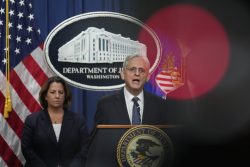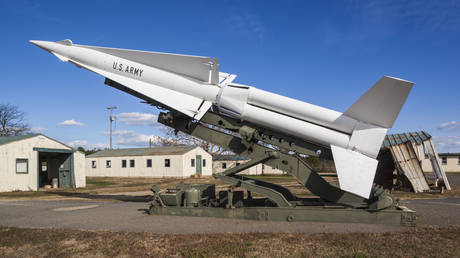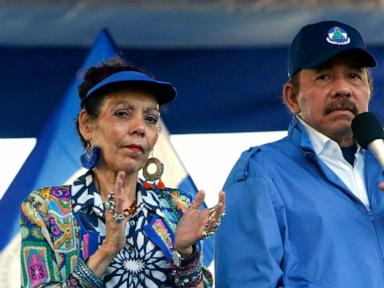ARTICLE AD BOX
BRUSSELS — Romania wants Europe’s rearmament push to benefit all EU nations, not just the largest ones.
The massive increase in defense spending and weapons orders that is foreseen in the coming years should translate into new factories and jobs in his country, Romania’s Defense Minister Liviu-Ionuț Moșteanu told POLITICO.
“If we spend people’s money on defense, it’s important for them to see that part of it is coming back to their country, for example via factories. It’s not just about buying rockets abroad,” he said in an interview at NATO headquarters.
“We aim to have a part of the production in the country. We want to be part of the production chain,” he added. “Every country wants to have a big share, but so far only a few do.”
Western nations such as France, Germany, Italy and Sweden have the bloc’s best-developed arms industries and are grabbing the majority of lucrative arms contracts. Former eastern bloc countries like Romania tend to have smaller defense companies without the technological know-how to produce the full array of weapons needed to rearm, meaning they are more dependent on external suppliers.
Russia’s invasion of Ukraine has opened the money taps for defense. NATO countries agreed this summer to boost their defense spending target from 2 percent of gross domestic product to 5 percent by 2035. According to the European Commission, reaching the new target will require an additional €288 billion spent on defense each year.
Romania is spending 2.3 percent of its GDP on the military this year and plans to raise that to 3.5 percent by 2030.
One of its main challenges is to modernize its armed forces, which have operated for decades largely with obsolete Soviet-era military kit.
The country, which borders Ukraine, Moldova and the Black Sea as well as EU countries, is key to regional security in southeastern Europe and hosts a NATO battlegroup led by France that also includes American troops.
Loans for weapons
Bucharest is set to be the second-largest user of the EU’s €150 billion SAFE scheme, and is asking for €16.7 billion in low interest loans for defense. Moșteanu said two-thirds of that money will be spent on military equipment and the remaining third on infrastructure; it also includes military aid to Ukraine and Moldova.
The condition for any procurement under SAFE — which is open mostly to European companies — would be industrial returns in Romania, the minister told POLITICO.
 The condition for any procurement under SAFE — which is open mostly to European companies — would be industrial returns in Romania, the minister told POLITICO. | Thierry Monasse/Getty Images
The condition for any procurement under SAFE — which is open mostly to European companies — would be industrial returns in Romania, the minister told POLITICO. | Thierry Monasse/Getty ImagesIn one example of the country’s push to ensure some defense cash stays at home, an ongoing €6.5 billion tender for more than 200 tanks sets a condition that final assembly happen in the country.
“It’s very important for the years to come that when we talk about spending money, we spread [the industrial return] evenly throughout the continent,” the minister said, referring also to countries further from the frontlines such as Portugal.
“It’s a negotiation with the producers,” he said, adding that if European manufacturers don’t accept domestic production requirements, Bucharest will take its money to companies outside the EU that are willing to do so.
“If some programs don’t look good under SAFE, we’ll move them under the national budget,” he stressed.
The Romanian government is already a big customer of foreign weapons manufacturers, especially from the U.S., Israel and South Korea. It recently purchased American-made Patriot air defense systems and F-35 warplanes, as well as K9 self-propelled howitzers from South Korea’s Hanwha Aerospace.
Last year, Hanwha Aerospace executives told POLITICO that Romania could become a weapons production hub for Europe, the Middle East and Africa.
What Romania brings to the table
Romania, which is one of Europe’s most industrialized countries, has assets to offer arms-makers, Moșteanu argued.
 Romania, which is one of Europe’s most industrialized countries, has assets to offer arms-makers, Moșteanu argued. | Andreea Campeanu/Getty Images
Romania, which is one of Europe’s most industrialized countries, has assets to offer arms-makers, Moșteanu argued. | Andreea Campeanu/Getty ImagesIt’s already luring in some of Europe’s largest defense companies: Bucharest and German giant Rheinmetall signed an agreement earlier this year to build an ammunition powder plant that will be partly funded by EU money under the Act in Support of Ammunition Production scheme.
In the near future, manufacturers will need to open new factories to meet demand, and Romania could easily host some of them, Moșteanu said: “We have defense production facilities with all the necessary approvals. They’re not up-to-date but it’s a good starting point.”
Another strength of the country is its robust automotive sector, which could help weapons manufacturers swiftly ramp up manufacturing. Defense companies across the bloc are teaming up with carmakers to benefit from their mass production expertise.
“We have a very strong automotive industry in Romania that can switch to the defense industry,” the minister said, adding that the machinery, production lines, expertise and supply chains are already in place.
Romania is also looking to cut red tape.
“We’re looking to change the legislation to speed investments in the defense industry. I know there is the defense omnibus in Brussels,” Moșteanu said, referring to the European Commission’s simplification package, “but I don’t know when it’ll come, I prefer to have something quick.”
.png)
 9 hours ago
1
9 hours ago
1








 English (US)
English (US)